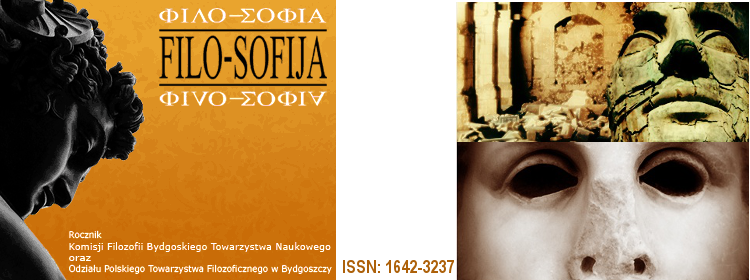Cybermonstrum w art-edenie
Abstract
In the first part of the paper, the author, addressing the modern art history and technological progress, calls the present day ontological status of the creator that of a cyborg. The way technology determines the status is being shown by many examples drawn from the science art periphery. The author explains the double existence of the cyborg (in the body and on the Internet) and outlines an image of a new and yet unnamed place of creative activities. For, according to the author, it is neither the Internet nor nature. Nor is it the human mind. The place is just the machine and man - unified and fused together, viz. the cyborg. The statement has been illustrated in ‚ÄúMask‚ÄĚ by StanisŇāaw Lem, a fragment of which presents the machine as a supernatural being and endowed with several personalities. The machine is an icon of the phenomenon of how the cyborg is indefinable. In the second part, the author identifies the properties of the cyborg with those of the monster that embodies evil, which results from the incomprehensible (as indefinable) ontological status of machine. In the Chapter entitled Cyber-monster, bio-monster and generative monster, evil is hidden under the guise of the machines producing artifacts spontaneously, and under the form of works basing on biomolecular researches. The hybrid form, after which the works are modeled; the complexity of technologies and their objectual character, in the context of the traditional art, inspire horror; they are monstrous. Still, they are not the works deserving the name of cyborgs before the art becomes a ‚Äúliving carcass‚ÄĚ and, as the author argues, the cyberspace is being explored by dint of an overall created for its needs and the true cyber-monster appears. Probably, our mind is then somewhere deep on the Internet and nothing is left of a man save the empty body. The paper is not strictly philosophical one. The author only slightly touches upon his fascination with the discipline. It is an essay that aims at showing the not yet sufficiently recognized problem of the modern art; the problem of its cyborgization.
PeŇāny tekst:
PDFAdministracja Cytowania | Strony czasopism
